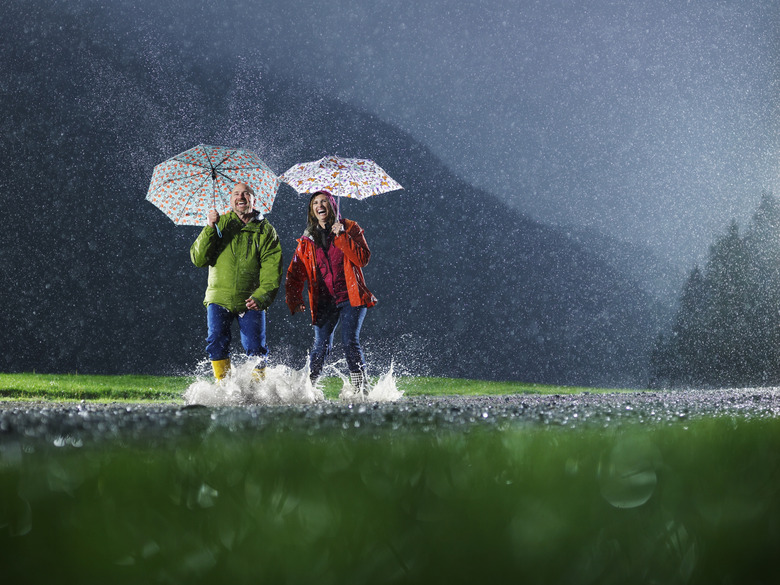How To Deal With A Flooded Yard With Only A Garden Hose
Things Needed
- Garden hoses
- Container for excess water
Many homeowners fear flooding. It can ruin yards and gardens and cause countless problems with staining and mold inside the home. Even those who don't live in flood zones can have flooding problems during very heavy rains or when snow melts in the spring. A great thing to have is a sump pump in your basement, which will keep your house flood-free in all but the worst of conditions. However, you can't install a sump pump in your backyard. It is also fairly difficult to bail out a yard. A siphon is the easiest, fastest way to drain your yard. You can purchase water pumps that have siphons specially designed for yards, but they're not necessary. You can create a siphon using items in your home.
Step 1
Connect two or three garden hoses together. If you have a small backyard, this should be enough. For very large yards, use four to six hoses, but connect them in sections of two or three so you can siphon water from either side of the yard to remove it faster. Make sure the connections are good and the hoses have no leaks.
Step 2
Find a place to direct the water. It should be within reach of your hose and in a place where the excess water will harm no one else. A street drain, nearby creek or pond, or a kids pool will all do fine. Toss one end of the hose into the center of the flood and the other into the receptacle to make sure the hose is long enough. Add another hose if necessary.
Step 3
Coil the hose loosely together and let one end drop into the flooded area. Lower the rest of the hose into the water and hold it under until bubbles stop forming on the water's surface. This means the hose is full of water. Place your thumb or palm over the end of the hose closest to you. Make sure the seal is tight so no water escapes.
Step 4
Drag the end of the hose to the receptacle and get it as close to the receptacle as you can. Direct the end of the hose downward and remove your hand. Water should pour from the end of the hose. This will continue until the flood end of the hose runs out of water.
Step 5
Watch to make sure the water continues to flow. If it runs out, check on the flood. If there is still water in your yard, repeat Steps 3 and 4 until all of the water is gone.
